Related Research Articles

The Church of Christ, Scientist was founded in 1879 in Boston, Massachusetts, by Mary Baker Eddy, author of Science and Health with Key to the Scriptures, and founder of Christian Science. The church was founded "to commemorate the word and works of Christ Jesus" and "reinstate primitive Christianity and its lost element of healing".
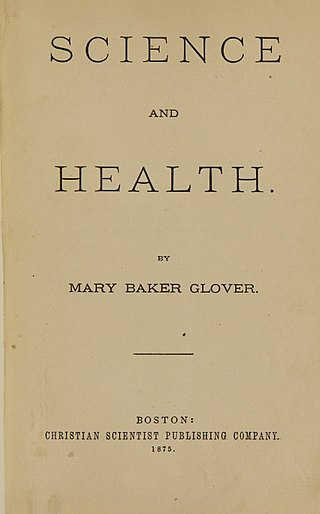
Science and Health with Key to the Scriptures by Mary Baker Eddy is, along with the Bible, one of the two central texts of the Christian Science religion. Eddy described it as her "most important work". She began writing it in February 1872, and the first edition was published in 1875. However, she would continue working on it and making changes for the rest of her life.

Mary Baker Eddy was an American religious leader and author who founded The Church of Christ, Scientist, in New England in 1879. She also founded The Christian Science Monitor in 1908, and three religious magazines: the Christian Science Sentinel, The Christian Science Journal, and The Herald of Christian Science. She wrote numerous books and articles, the notable of which were Science and Health with Key to the Scriptures and Manual of The Mother Church. Other works were edited posthumously into the Prose Works Other than Science and Health.

Christian Science is a set of beliefs and practices which are associated with members of the Church of Christ, Scientist. Adherents are commonly known as Christian Scientists or students of Christian Science, and the church is sometimes informally known as the Christian Science church. It was founded in 1879 in New England by Mary Baker Eddy, who wrote the 1875 book Science and Health with Key to the Scriptures, which outlined the theology of Christian Science. The book became Christian Science's central text, along with the Bible, and by 2001 had sold over nine million copies.

The Destiny of The Mother Church is a book about Christian Science written by Bliss Knapp, published privately by him in 1947, and publicly in 1991 by Christian Science Publishing Society. Knapp and his parents, Ira O. and Flavia Stickney Knapp, all knew Christian Science founder Mary Baker Eddy. His parents were students of hers and his father was one of the original members of the Board of Directors of The First Church of Christ, Scientist. Until 1991, the book was repeatedly rejected for publication by the church's Board of Directors because of its depiction of Eddy as the fulfillment of biblical prophecy and equating her with Christ Jesus, a position which Eddy considered blasphemous. Destiny's publication caused divisions within the church, including several resignations of prominent church employees. Critics claimed that the failure of the church's then-recent television venture, which had cost the church several hundred million dollars, had motivated the Board's reversal on publishing Knapp's book. Knapp, his wife and her sister left wills that granted bequests totalling over $100 million promised to the church if the book were to be published. The wills set a time limit of 20 years for the book to be published, otherwise the bequests were to be divided between Stanford University and the Los Angeles County Museum of Art, and the church would receive nothing. The 1973 death of Knapp's wife set the date of the time limit to May 1993.

Bliss Knapp, the son of Ira O. and Flavia S. Knapp, students of Mary Baker Eddy, was an early Christian Science lecturer, practitioner, teacher and the author of The Destiny of the Mother Church.
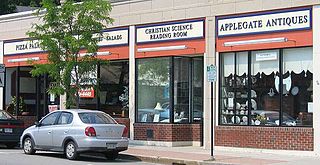
A Christian Science Reading Room is a facility operated as a public service by a Christian Science church in the community where that church exists. The local branches of The Mother Church in Boston, Massachusetts, maintain these rooms as a place where one may study and contemplate the Bible and Christian Science literature in a quiet atmosphere, similar to a library.

The Christian Science Publishing Society was established in 1898 by Mary Baker Eddy and is the publishing arm of The First Church of Christ, Scientist in Boston, Massachusetts.
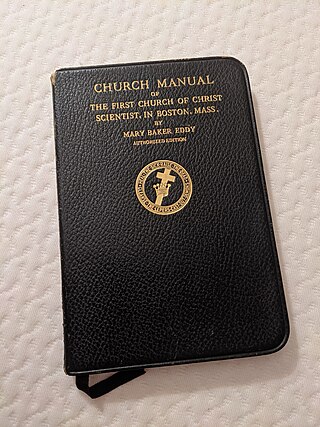
The Church Manual of The First Church of Christ, Scientist, in Boston, Massachusetts commonly known as the Manual of The Mother Church is the book that establishes the structure and governance of The First Church of Christ, Scientist, also known as The Mother Church, functioning like a constitution. It was written by Mary Baker Eddy, founder of the church. It was first published in 1895 and was revised dozens of times. The final edition, the 89th, was published in 1910.

The First Church of Christ, Scientist is the administrative headquarters and mother church of the Church of Christ, Scientist, also known as the Christian Science church. Christian Science was founded in the 19th century in Lynn, Massachusetts, by Mary Baker Eddy with the publication of her book Science and Health (1875).

Eschatology is a New Thought movement founded by American writer and former practitioner William W. Walter. Walter was formally a member of the Catholic Church and then The First Church of Christ, Scientist until 1912 when he rejected organized religion in order to found his own metaphysical system. Although it is generally classified as a new religious movement, Walter did not see it as a religious movement, and his followers reject the association with religion. He originally named his organization "The Walter Method of Christian Science"; and the term Eschatology as a trademark for Walter's teaching was not used until the 1920s.

Augusta Emma Stetson was an American religious leader. Known for her impressive oratory skills and magnetic personality, she attracted a large following in New York City. However, her increasingly radical theories, conflicts with other church members including a well-known rivalry with Laura Lathrop, and attempts to supplant Mary Baker Eddy as the leader of The First Church of Christ, Scientist, led to her eventually being excommunicated from the church on charges of insubordination and of false teaching. Afterwards she began preaching and publishing various works on her theories which she named the "Church Triumphant," and started a controversial radio station to advance her cause.

The Christian Science Quarterly is a publication of the Christian Science Publishing Society that sets out the Bible lessons for all students of Christian Science. Each lesson serves as the Sunday sermon in church and is studied for the week preceding the Sunday on which it is read as the sermon.
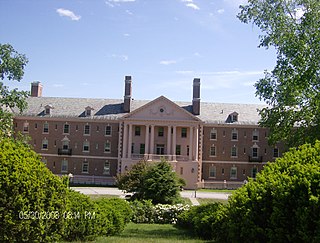
The Pleasant View Home is an historic senior citizen residential facility located at 227 Pleasant Street in Concord, New Hampshire, in the United States. On September 19, 1984, it was added to the National Register of Historic Places.
A Reader in a Christian Science church is a member of the congregation who has been elected to serve in one of two positions responsible for church services. Each week's sermon in Christian Science churches is outlined in the Christian Science Quarterly, prepared months in advance, and is the same in all Christian Science churches, worldwide. As a lay church, the congregation elects readers from the congregation and they serve as readers for a set period of time. The sermons consist of passages from the Bible and Science and Health with Key to the Scriptures by Mary Baker Eddy, and are studied as lessons during the week and read aloud to the congregation on the Sunday following.
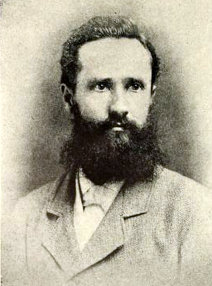
The Salem witchcraft trial of 1878, also known as the Ipswich witchcraft trial and the second Salem witch trial, was an American civil case held in May 1878 in Salem, Massachusetts, in which Lucretia L. S. Brown, an adherent of the Christian Science religion, accused fellow Christian Scientist Daniel H. Spofford of attempting to harm her through his "mesmeric" mental powers. By 1918, it was considered the last witchcraft trial held in the United States. The case garnered significant attention for its startling claims and the fact that it took place in Salem, the scene of the 1692 Salem witch trials. The judge dismissed the case.
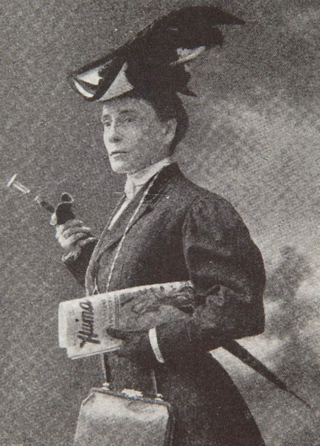
Sibyl Wilbur O'Brien Stone, best known as Sibyl Wilbur, was an American journalist, suffragist, and author of a biography of Mary Baker Eddy. She was a San Diego Branch Member of the National League of American Pen Women and a member of the New England Woman's Press Association.

The Mary Baker Eddy House is a historic house museum at 8 Broad Street in Lynn, Massachusetts. Built in 1870–71, it was the home of Mary Baker Eddy (1821-1910), founder of the Church of Christ, Scientist, from 1875 to 1882. The house is now owned by the church, which operates it as a historic site devoted to Eddy's life and early church history. The house was designated a National Historic Landmark in 2021, and was included in the Diamond Historic District in 1996.
The Christian Science movement is a religious movement within Christianity founded by Mary Baker Eddy that arose in the mid to late 19th century and that led to the founding of The First Church of Christ, Scientist.

Sibyl Marvin Huse was a French-born American author of religious books and teacher of Christian Science. Huse holds a prominent place in the Christian Science movement and has a large clientele of devoted students who testify to her spiritual understanding and clear teaching of the beliefs as promulgated by Mary Baker Eddy. Huse was the author of four books on religion. As a life-long student of the beginnings of the Anglo-Saxon race, she read history in the light of Bible prophecy and while substantiating the claims of Professor Charles H. L. Totten and other experts who traced the lost tribes of Israel to the Anglo-Saxons of England and the U.S., she added interesting revelations from the metaphysical standpoint.
References
- ↑ Gill, Gillian (1998). Mary Baker Eddy. Reading, Mass.: Perseus Books. p. 583.
- 1 2 Orcutt, William Dana (1950). Mary Baker Eddy and her books. Boston, Mass.: CSPS. p. 145.